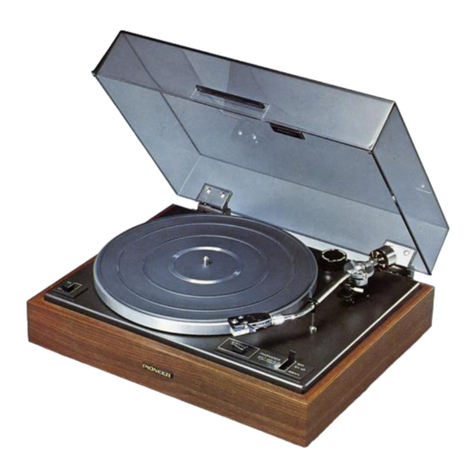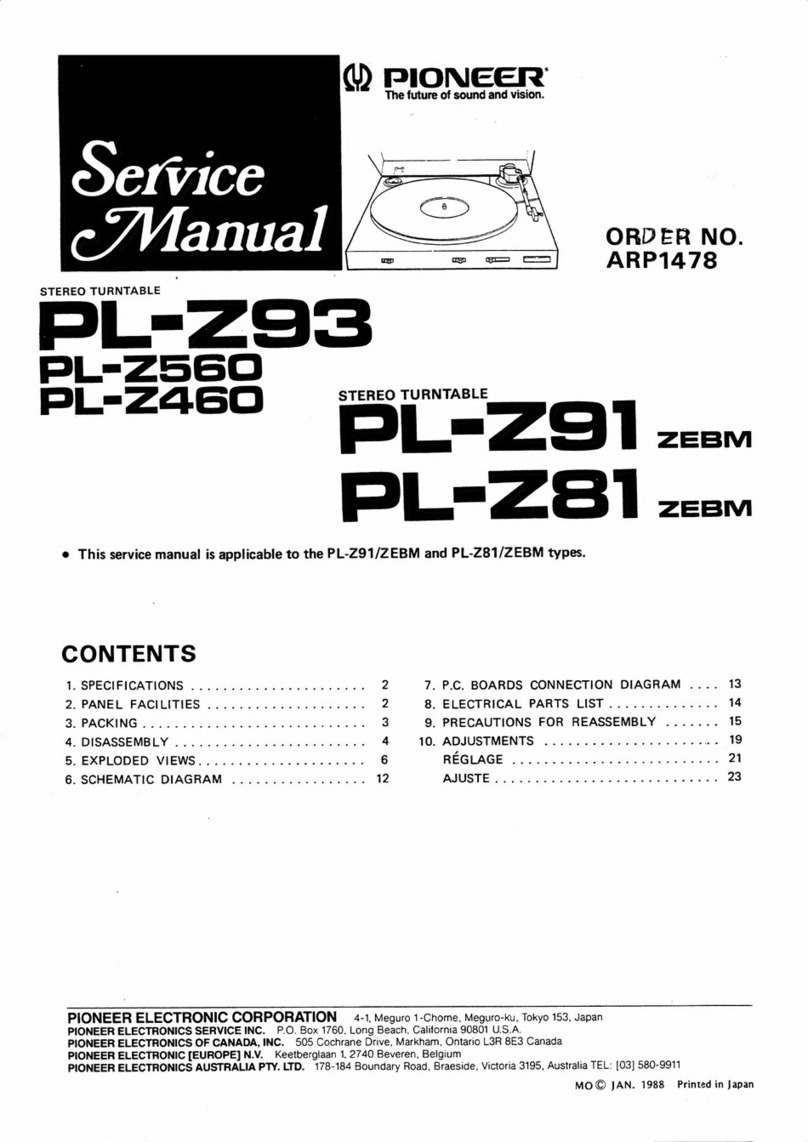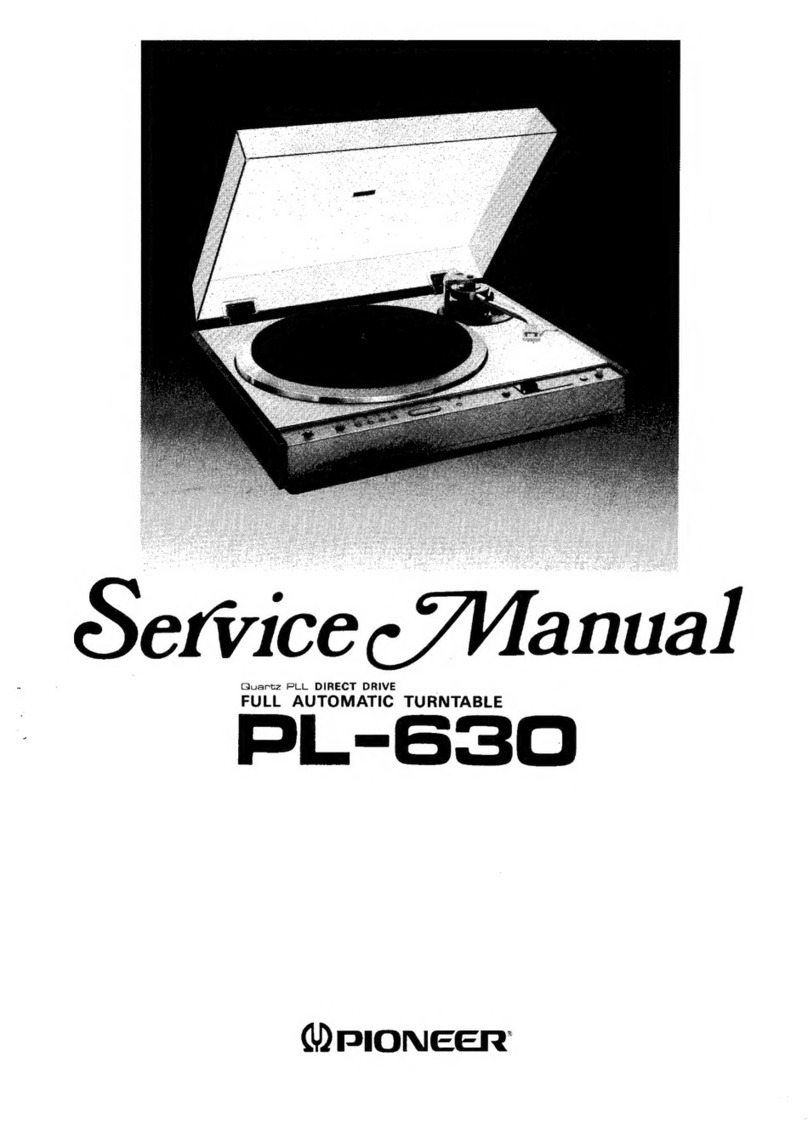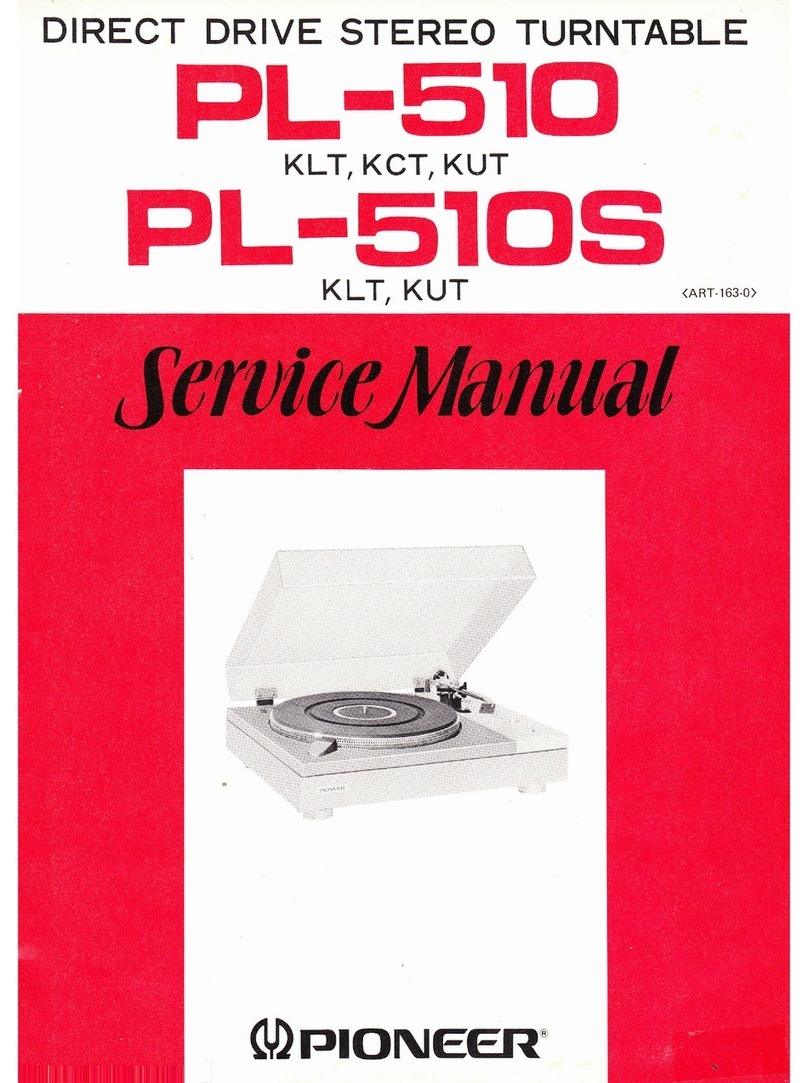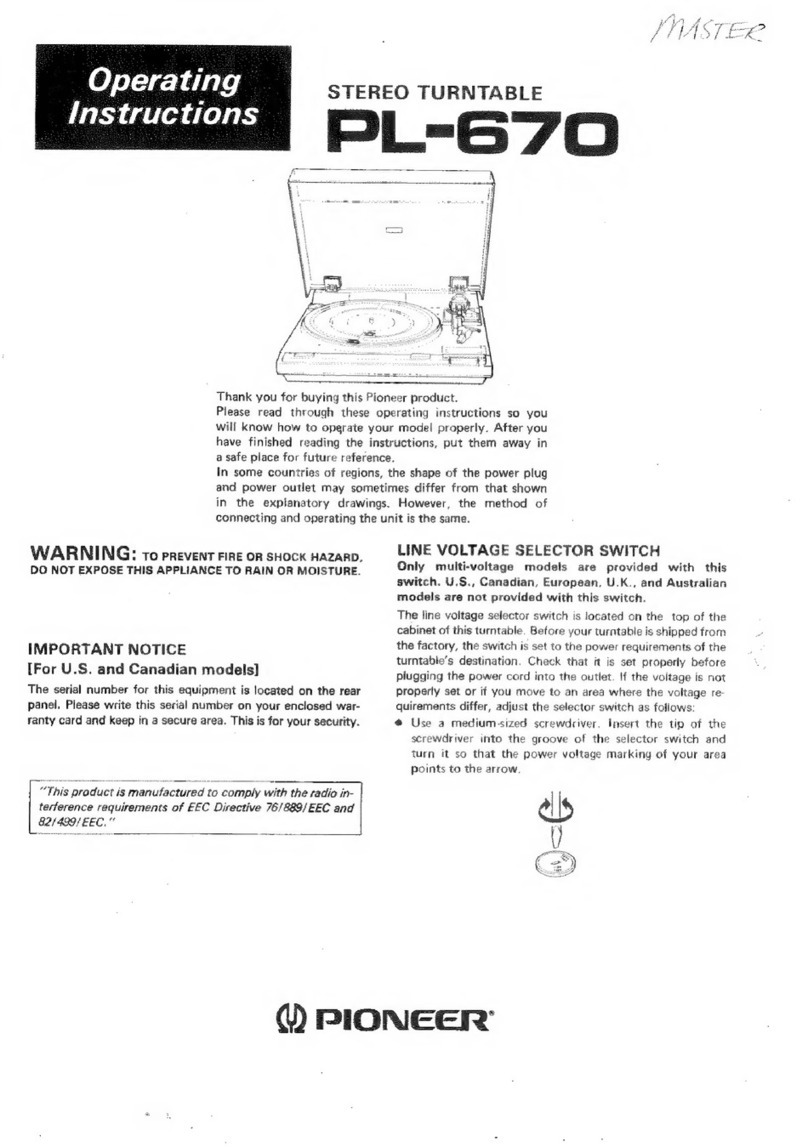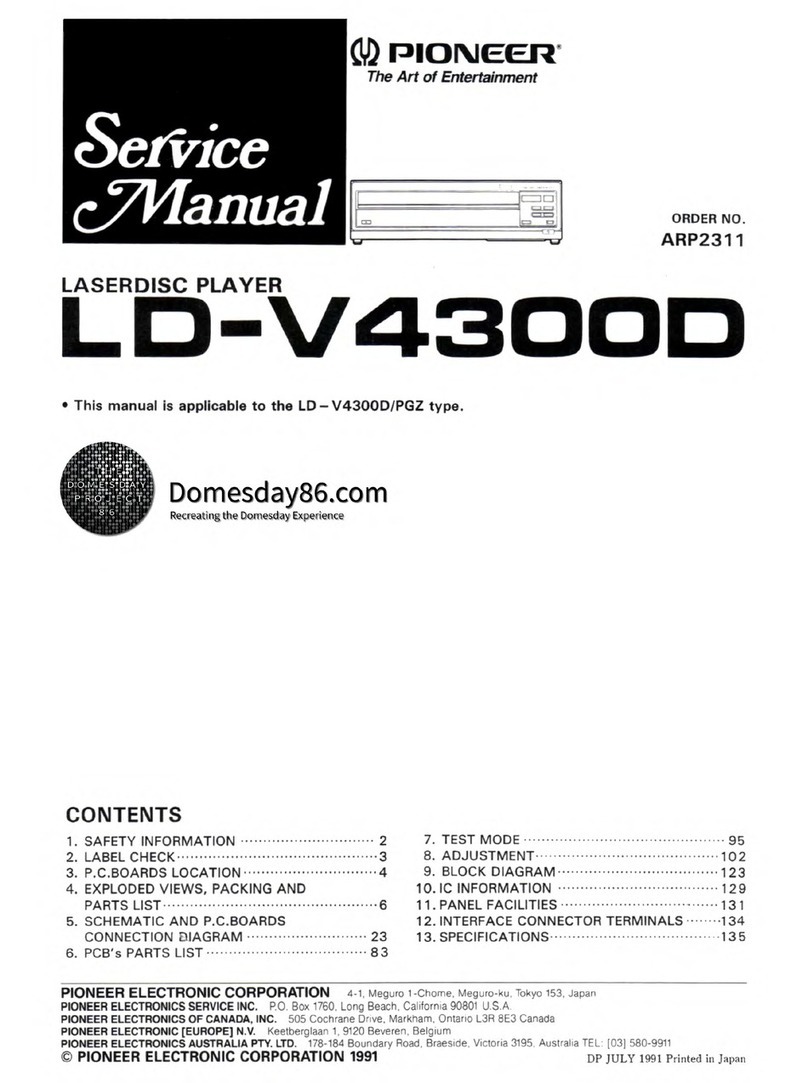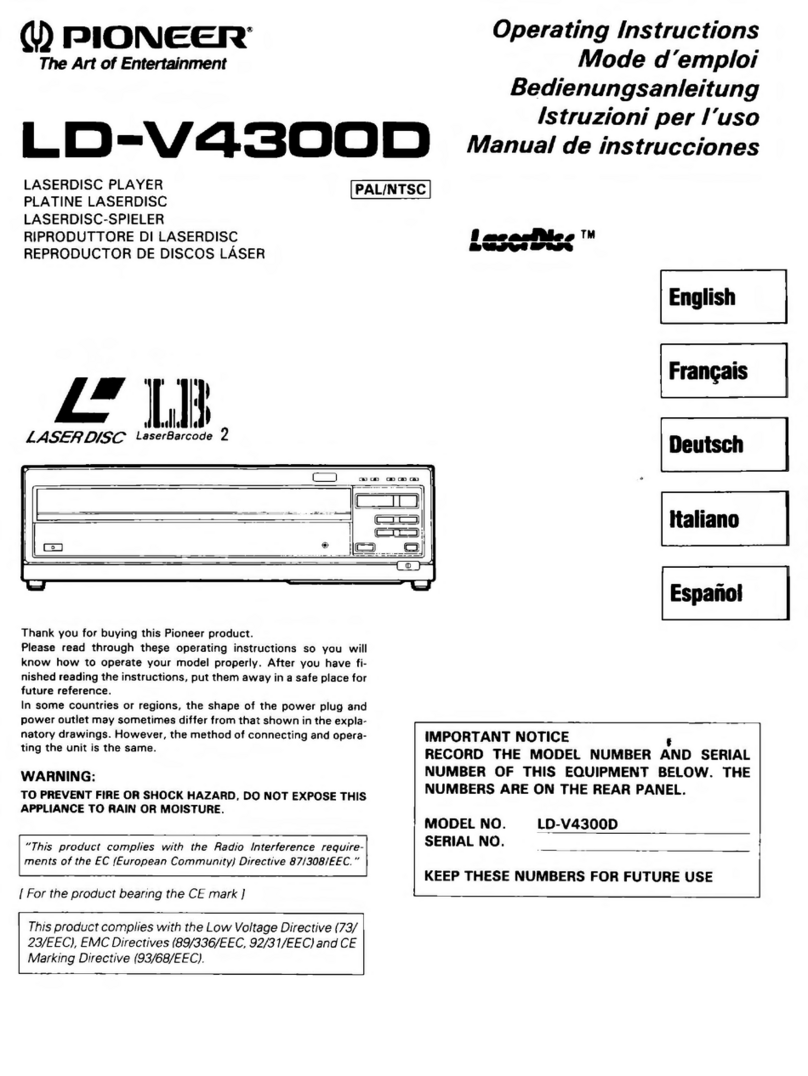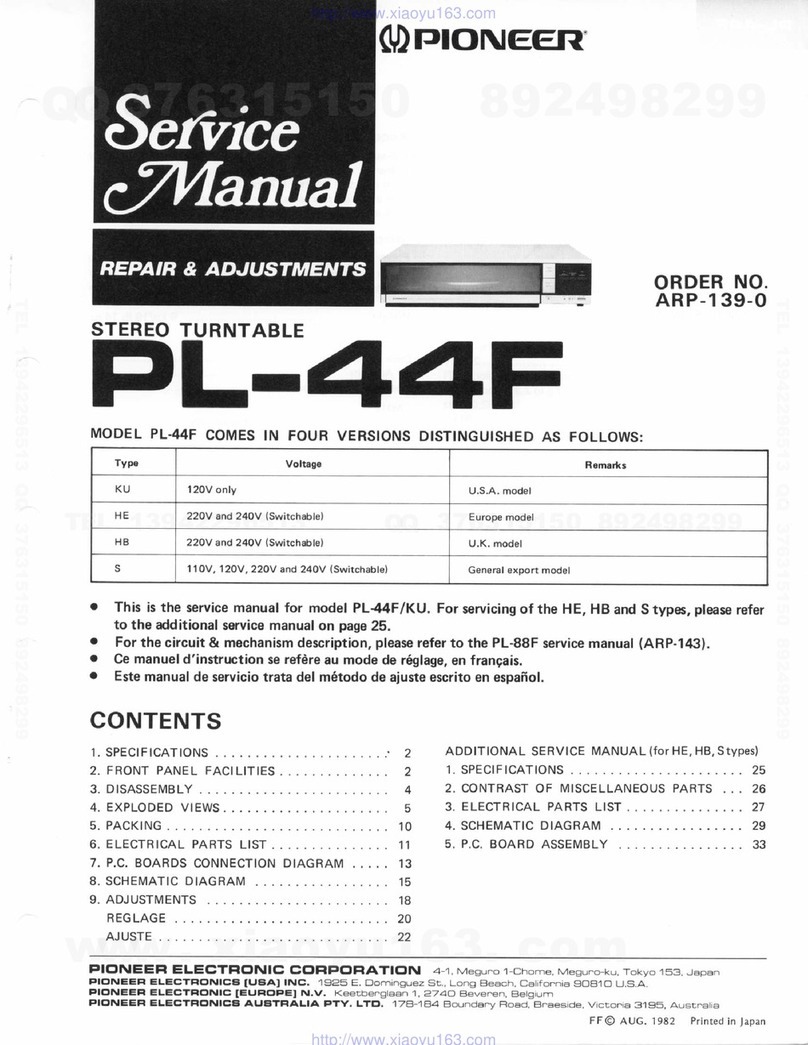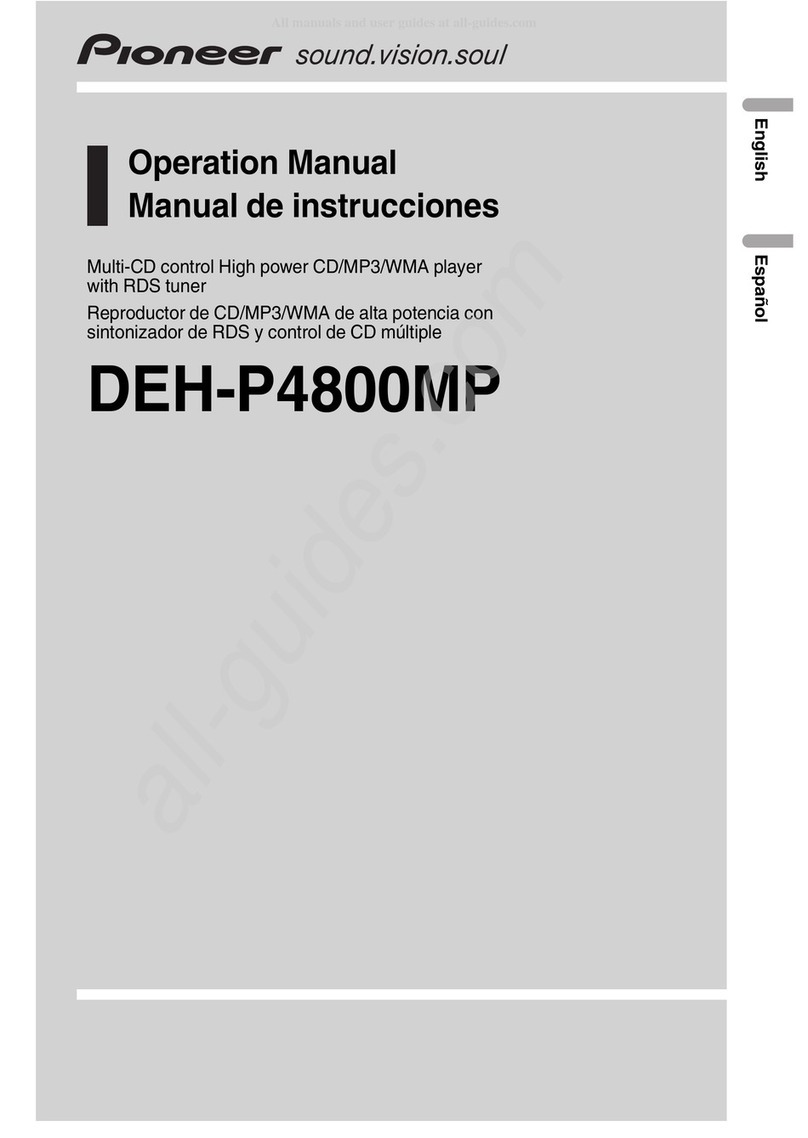
PL-V70,PL-LSO
1.
SPECIFICATIONS
Motor
and
Turntable
Drive
SYSteM
.......c.ccesceceeseeecneeseseneraeeeseererseenes
Belt-drive
MOtOP
suskeioccitdevasesssacecvasrepeees
vie
eeeresetene
DC
servo
motor
Turntable
Platter
...........:cceseseeeeeues
aluminum
alloy
die-cast
SPECS
ieee
veer
edces
dendessecisbastedidancssnes
nas
33-1/3
and
45
rpm
Wow
and
Flutter
..............0ee
eee
e
ee
Less
than
0.05%
(WRMS)
+
0.065%
WTD
Peak
(DIN)
Signal-to-Noise-Ratio
.........cccseee
More
than
70
dB
(DIN-B)
(with
Pioneer
cartridge
model
PC-291)
Tonearm
TY
DO)
iseiccvssannstusvssedessioisecessece
Integrated
straight
pipe
arm
TYPO
costs
ceiehscetnaladiedanceccccceasseatenpateceunvestepaoedetes
IM
type
Stylus
sc.csssacteasecvivewseheiteecsssvestes
0.5
mil
diamond
(PN-291)
Output
Voltage
........eccecceseseneeereeeneeeeeeeeeeeeeen
ene
2.5mV
(1
kHz,
5cm/s
LAT.
Peak)
Tracking
Force
........ccceeceeeeeeeee
ee
1g
to
1.5
g
(proper
1.25
g)
Frequency
RESponse
........:ccseeeeeeseeseseeeeeees
10
to
30,000
Hz
Recommended
Load
.......ccccceceseseeeeneeeneeanaeeeeeseenes
50
k&
WEIGH
.......:cccesesccecscrscnsccsccecncnceecsea
seer
rsssaseneeeeenes
4g
Subfunctions
Auto
lead-in,
auto
return,
auto
cut,
repeat
Arm
elevation,
program
search
play,
manual
play,
Skip,
auto
disc
size
selector,
record
detection,
Auto
speed
selector,
Miscellaneous
Power
Requirements
.......ccsssssesssesssesenens
AC
120
V,
60
Hz
Power
Consumption
.........ccssscesssssscereesceresseveceeeaeeserens
11W
Dimensions
............0se0eeeeees
420
(W)
x
104
(H)
x
350
(D)
mm
16-1/2
(W)
x
4-1/8
(H)
x
13-3/4
(D)
in.
Wight
223
cc.
idesseedescdades
avibanccnideddeseensaced
7.5
kg/16
lb
8
oz
Accessories
EP(Adapter’
ei
eisescosteohe
dneeecasacseutsgaacee
diac
Veadavbecewisindses
1
Remote
control
COrd
.........ccccsceceeescuteceseeseecneeeneseenceaees
1
Remote
control
plate
...........cccscscececceeeceneeeeeeeseeneeertenaes
1
Operating
INStructions
...........cccccsecececeneseeceeeeeeeenneseenee
1
NOTE:
Specifications
and
design
subject
to
possible
modification
without
notice,
due
to
improvements.



